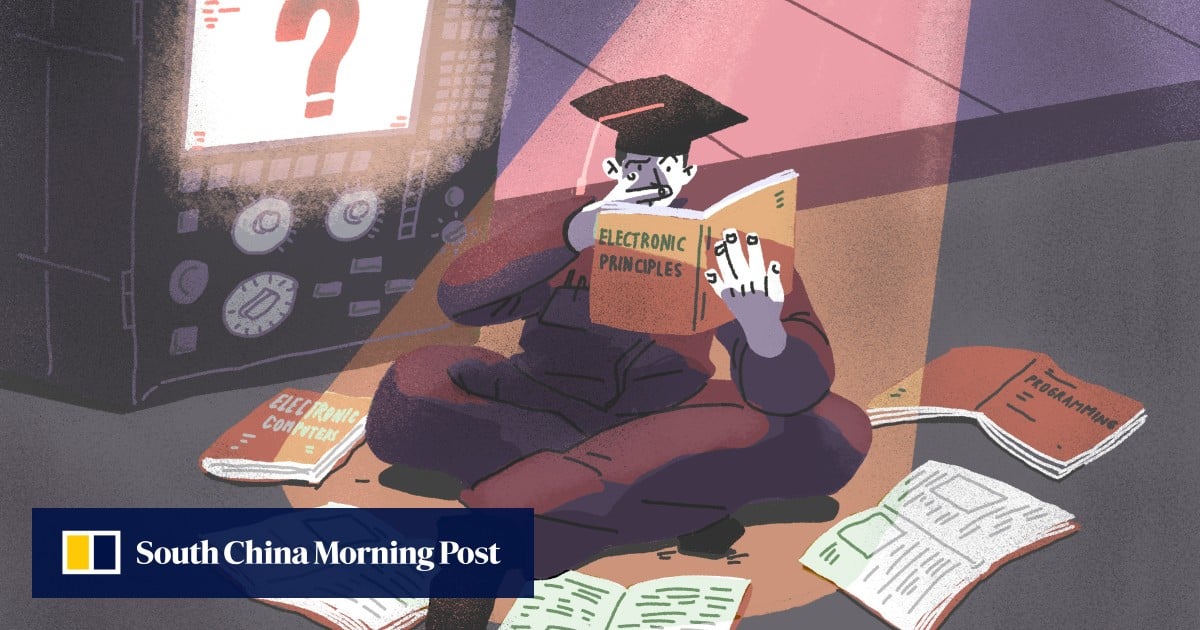

Beijing also reiterated this point during the 20th party congress in October, saying it would make the cultivation of highly skilled personnel an important part in its strategy to develop a quality workforce, and policymakers introduced a number of reforms in the vocational education field.
This came after the country estimated that there would be a shortage of nearly 30 million workers in the manufacturing sector by 2025. And of the 100 occupations with the greatest worker shortages, 36 were categorised as “manufacturing and related personnel”, according to the Ministry of Human Resources and Social Security.
We used to have difficulty enrolling students, but now the number of students is far greater than our demand
Coupled with the nation’s economic downturn and increasing strain on its workforce, China is making young people aware of the need to possess technical skills, which has resulted in some vocational schools becoming more competitive, according to Zhang Xiaorao, director of Silk Road Vocational College.
“We used to have difficulty enrolling students, but now the number of students is far greater than our demand, and we even need to select from them,” Zhang said, adding that the current labour shortage in some factories has made it easier for vocational school students to find jobs than their peers with university degrees.
Officials in Beijing expect the number of university graduates to reach 11.58 million this year, an increase of 820,000 from 2022.
But the jobless rate for the 16-24 age group remained at an elevated level of 16.7 per cent in December, down from 17.1 per cent in November.
The broader urban surveyed jobless rate, meanwhile, stood at 5.5 per cent in December, down from 5.7 per cent in November, while official figures also show that China created 12.06 million jobs last year.
Despite receiving more governmental funding, Zhang said her school still faces the problem of weak school-enterprise cooperation, as the sluggish economy has made it necessary for companies to prioritise their own survival.
“They don’t really fully take into account the need for talent, and cooperation between companies and schools has become significantly weaker. But that cooperation is what we need most now,” Zhang added.
Though China has the largest vocational education system in the world, it has not traditionally been seen as keeping up with changing trends in manufacturing, according to the White Paper on China’s Development of Vocational Education published by German technical services provider TUV Rheinland in 2018.
“Vocational institutions are still not sensitive to the changing trends in manufacturing, and there is a lack of thinking about ways to develop a workforce suited to the requirements of new industries,” the paper said.
Less than 10 per cent of teachers in China’s secondary vocational schools have professional-manufacturing or business-management experience, and only around 15 per cent have undertaken technical training in companies, as qualifications are a threshold keeping skilled workers out of institutions, the paper added.
This has led to a structural contradiction, with tens of millions of vocational college graduates unable to fill the shortage of nearly 10 million senior skilled workers in China.
According to an August report by the Ministry of Education, detailing the development of vocational education in China, there were more than 1,300 majors and 120,000 vocational education points in China. And more than 70 per cent of new frontline workers in modern manufacturing, emerging industries and modern service industries come from vocational schools.
The report also indicated that, to achieve greater school-enterprise cooperation, China had formed about 500 vocational education groups by 2021, attracting more than 30,000 enterprises to team up with vocational schools. And it said there were 24,900 internship and training bases built jointly by vocational schools and enterprises in the country, with an average annual growth rate of 8.6 per cent.
The current vocational education system is out of touch with the needs of enterprises and cannot provide them with the talent they are seeking
The lack of blue-collar skilled workers is a prominent problem in China’s job market, especially in fields such as high-precision manufacturing, according to Mao Yufei, an associate researcher with the China Institute for Employment Research.
“China’s skilled workers mainly come from vocational colleges, but the current vocational education system is out of touch with the needs of enterprises and cannot provide them with the talent they are seeking,” Mao said.
Compared with theoretical courses, cultivating skilled workers requires more emphasis on practical operations and hands-on training, which is precisely what most vocational schools in China lack, according to Mao.
“The reality is that vocational education is more focused on theoretical teaching, the teaching staff lacks professional talent, the teaching equipment is backward, the curriculum system deviates from the actual needs of enterprises, and students cannot be trained in relevant competencies,” Mao said.
Mao added that advancing reform in the vocational education system, including training vocational college graduates according to the recruitment needs of enterprises, is necessary if China wants to address the shortage of skilled workers.
More than 70 per cent of China’s skilled workers comprise migrant workers with high school degrees, and only 5 per cent of the industrial workforce is made up of truly senior skilled workers – far below the 40 per cent in Japan and 50 per cent in Germany.
Due to the gap between the technical abilities of vocational graduates and the talent needs of the manufacturing industry, by 2025, China could face a talent shortage of 9.5 million people in the new information technology industry, and 9.09 million in power equipment, the white paper suggested.
To address this gap, Beijing issued a reform programme late last year to optimise its vocational education system, stipulating that local governments include the establishment of courses in the new information technology industry, robotics, electrical equipment and aerospace at the region’s vocational colleges.
Faced with long-standing discrimination against graduates of vocational schools and skilled workers in the job market, Beijing also enacted the Vocational Education Law in April, stating that vocational education is as important as general education, rewarding companies that deepen their cooperation with vocational schools, and calling for higher social status and improved treatment for technical staff.
After graduating from the Kunming Industrial Vocational and Technical College of Industry five years ago with a college degree in electrical automation, Ding Wan had to work as an outsourced employee at a state-owned enterprise because of the high academic requirements at its steel plant.
The courses that Ding studied at the vocational school were more in line with the needs of the factory, which, in Ding’s opinion, was largely because most of the teachers were former employees of the factory.
However, despite being skilled and qualified in her field of expertise, Ding lost out to more educated postgraduate competitors, as companies still view educational qualifications as a critically important prerequisite for candidates.
“It’s hard for undergraduates to get jobs in these well-known steel mills, let alone college students like us, and I’ve been an employee without a contract for five years,” the 26-year-old added.
To address academic discrimination, last year China further promoted the vocational education college entrance examination, allowing students from vocational schools to participate in the college entrance examination and receive an undergraduate education together with high school students.
“Now they can have a bachelor’s degree after accepting a vocational education,” said Zhang at Silk Road Vocational College. “This can greatly reduce much of the burden they face from social discrimination.”
A major social factor influencing students to study vocational education is this type of long-held discrimination against workers, Zhang said.
“People are still under the impression that ‘everything is inferior but studying’, which has been part of traditional Chinese culture for thousands of years,” she said.

